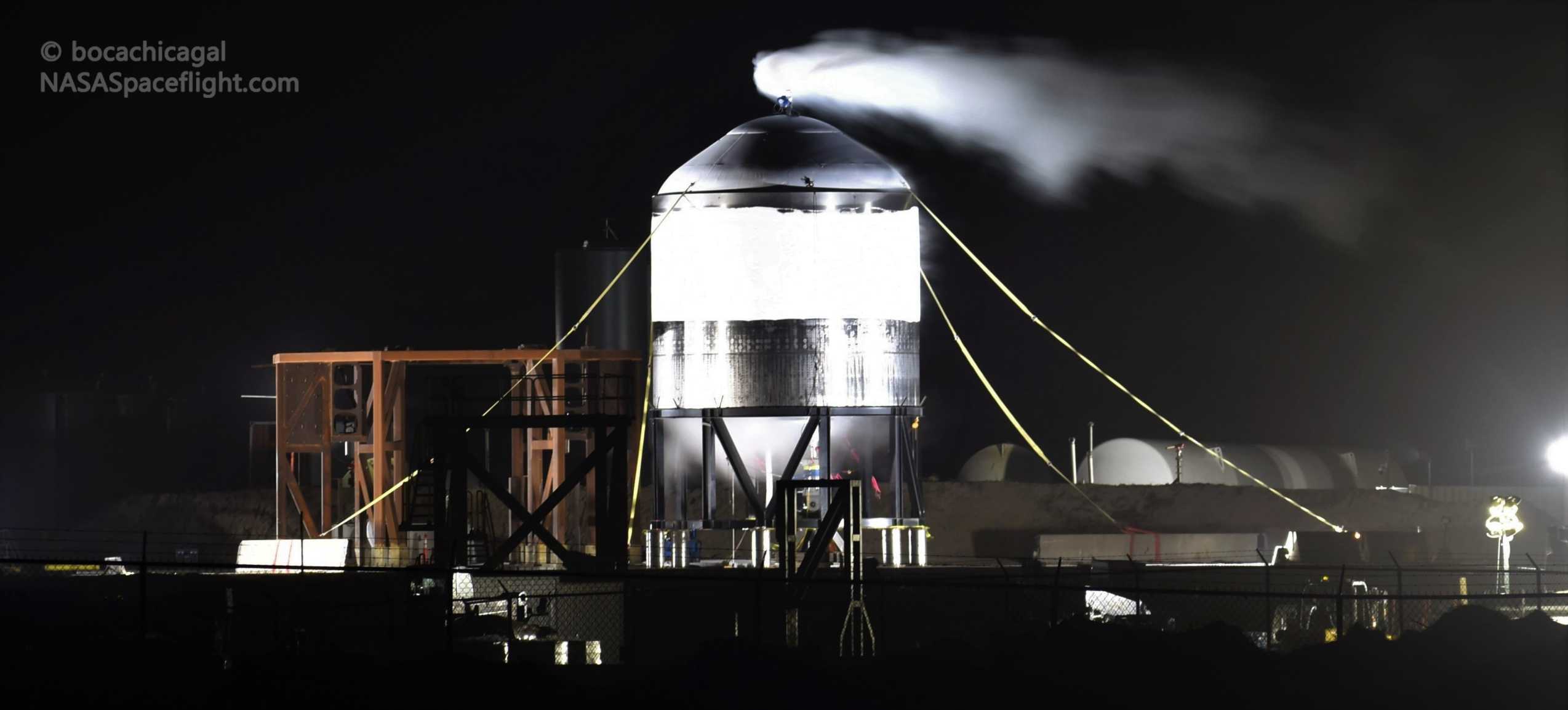
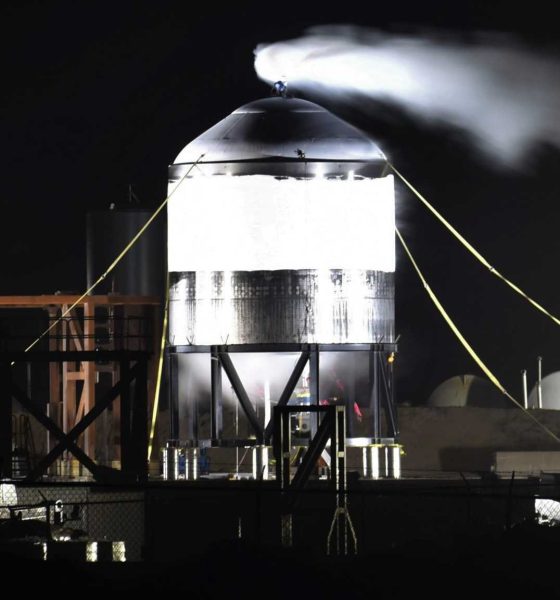
News
SpaceX's latest Starship test was uneventful and that's great news for its flight debut
According to Elon Musk, SpaceX has successfully completed its latest Starship prototype test in a uniquely uneventful fashion, great news for the next-generation rocket’s next steps and first flight tests.
The SpaceX CEO revealed the news some 12 hours after the company wrapped up the Starship tank test at its Boca Chica, Texas facilities. Another excellent example of SpaceX’s preferred process of agile development, the test followed just nine days after the Starship SN01 prototype’s first cryogenic test unexpectedly unearthed a design flaw. SpaceX analyzed the results of Starship SN01’s unintentional launch debut and drew up plans to rapidly repurpose a Starship tank initially destined for the SN02 prototype.
By using existing hardware to test an upgraded iteration of the part that destroyed Starship SN01, SpaceX has now effectively retired the risk posed by that prior failure less than two weeks after it occurred. Elon Musk specifically noted that the former SN02 engine section “passed cryo pressure & engine thrust loads,” confirming that there was more to the exceptionally uneventful evening of March 8th than met the eye. While putting on much less of a show for local observers, this particular boring test is a great sign for the next few steps of SpaceX’s Starship development program.
SN2 (with thrust puck) passed cryo pressure & engine thrust load tests late last night— Elon Musk (@elonmusk) March 9, 2020
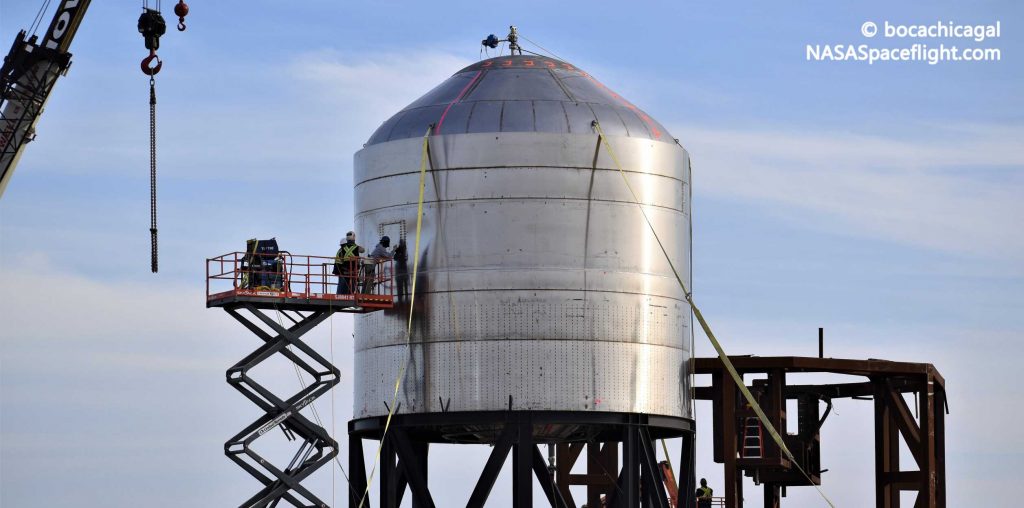
Simply put, despite successfully demonstrating that Starship’s improved “thrust puck” and engine section can survive flight-level tank pressures and the thrust of a Raptor engine, one would be hard-pressed to determine as much by inspecting the prototype that managed the feat. Such a visually uneventful test is a first for SpaceX’s post-Starhopper Starship testing, where “before” and “after” photos typically start with a shiny tank and finish with a well-distributed field of steel shrapnel.
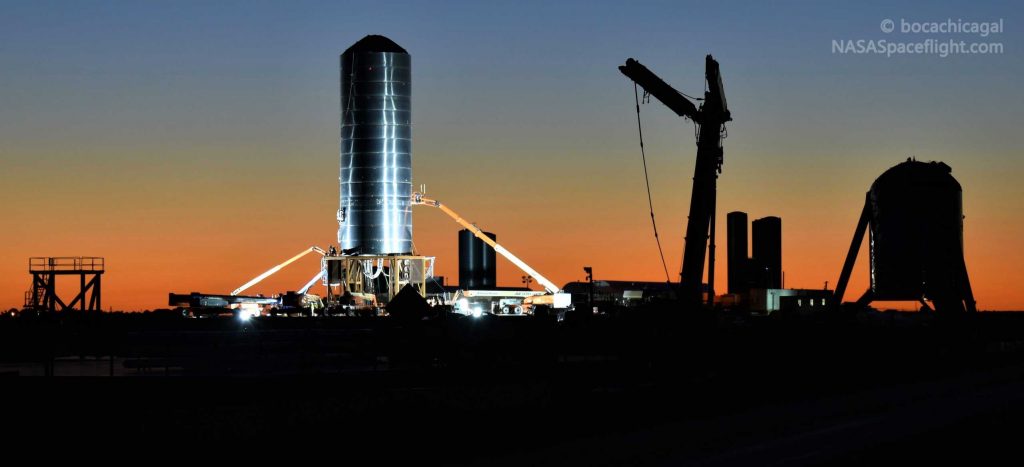
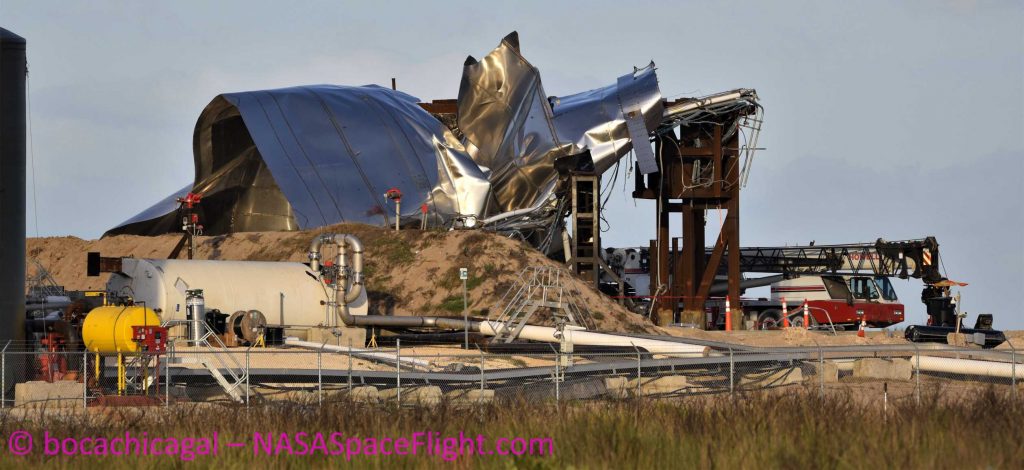
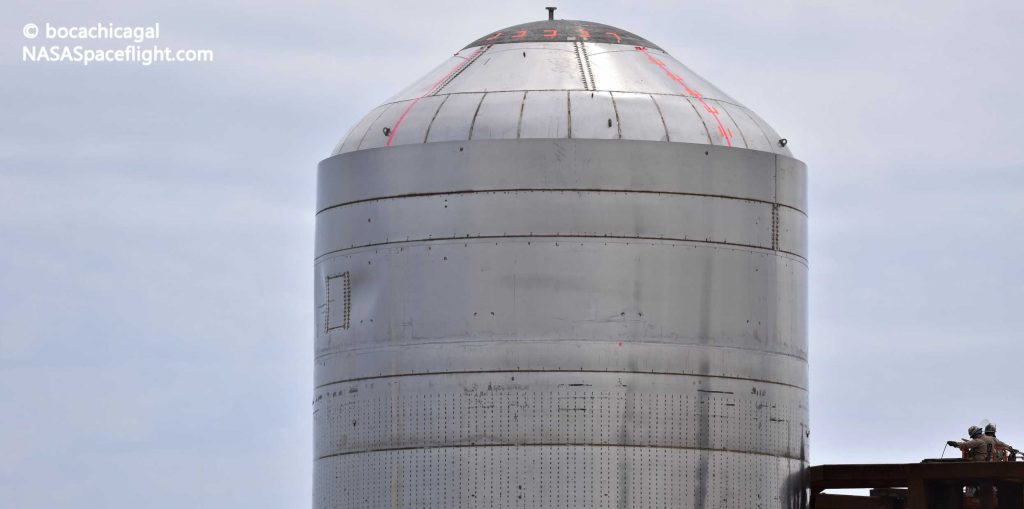
Musk’s description of the test suggests that SpaceX’s intention with the SN02 test tank – built in just two weeks – was to stress it up to (and likely beyond) the pressures and mechanical stresses Starship engine sections will need to survive in flight. In simpler terms, they likely tried to burst the tank by pressurizing it with liquid nitrogen, a supercool cryogenic fluid. It’s unclear exactly how far SpaceX pushed the tank, but it’s safe to say that it went at least as high as past test tanks, meaning 7-8.5 bar or 100-125 psi. At a bare minimum, a test that failed to reach Starship’s minimum flight pressure of 6 bar (90 psi) would be of dubious value for the actual orbital ship.
A step further, SpaceX installed a hydraulic jack underneath the test tank in a bid to simulate the stresses it would experience with a single Raptor engine. Capable of producing approximately 150-200 tons (1500-2000 kN) of thrust, even Raptor is relatively minor compared to the Starship tank’s likely ~500 metric ton (1.1 million lb) mass. Still, the fact that the SN02 test tank survived the combination of a highly pressurized tank and the simulated thrust of a Raptor engine suggests that SpaceX is now ready for a more successful repeat of Starship SN01 testing.
Confirming those suspicions, Musk subsequently revealed that the Starship prototype integrated immediately after the SN02 test tank will likely attempt the first Raptor static fire tests and may even perform short flights further down the road. As always, SpaceX’s testing programs are fluid and likely to change as new results continuously shape the path forward, meaning that Starship SN03 could easily be destroyed during testing. Starship SN04, said by Musk to be the hopeful candidate for “longer [test] flights,” would thus be repurposed to continue SN03’s test campaign — and so on with SN05, SN06, and beyond.
Regardless, as the CEO notes, perhaps the most important aspect of all these rapid-fire tests is that SpaceX is quickly building up an impressive Starship production line. Before, during, and after SN02’s test campaign, SpaceX’s South Texas team has been simultaneously fabricating and stacking new steel rings, bulkheads, and noses for the next few Starship prototypes. As a result, Starship SN03’s tank section could be just a week or two away from complete integration, after which SpaceX will likely transport it to the launch pad to prepare for Raptor static fire testing.
Check out Teslarati’s Marketplace! We offer Tesla accessories, including for the Tesla Cybertruck and Tesla Model 3.

News
Tesla Full Self-Driving lands in a new country, its 7th
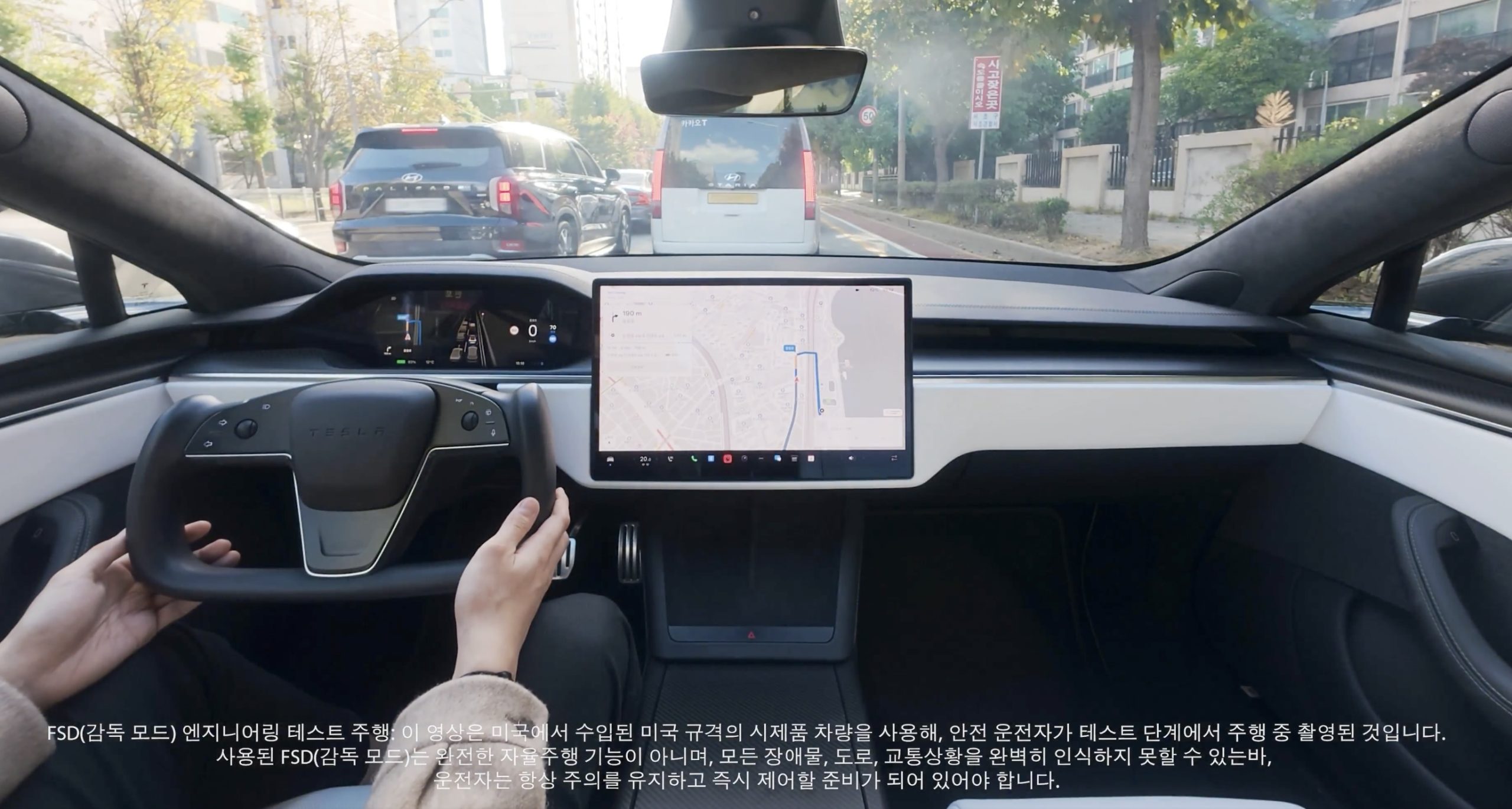
Tesla Full Self-Driving has officially landed in a new country today, its seventh overall after it launched in both Australia and New Zealand earlier this year.
On Sunday, Tesla owners in South Korea reported that the company’s Full Self-Driving (Supervised) had started arriving in their vehicles. Owners reported that it was v14.1.4, which is not the latest version available in other countries, but is one of the most recent releases Tesla has deployed to drivers:
From 6 to 7
Tesla Full Self-Driving has launched in South Korea; the 7th country to have FSD https://t.co/X6gm1SyoxV
— TESLARATI (@Teslarati) November 23, 2025
This marks the seventh country in which Tesla has enabled its Full Self-Driving suite, following the United States and Puerto Rico, Canada, China, Mexico, Australia, and New Zealand.
Tesla launched Full Self-Driving most recently in Australia and New Zealand about three months ago. The expansion is a major breakthrough for the company as it aims to launch Full Self-Driving on a global scale.
However, the company’s biggest challenge thus far has been getting European regulatory agencies to handle the red tape that has inhibited Tesla from launching its semi-autonomous driving suite on the continent. Recently, it admitted that it sees a pathway through Dutch regulatory bodies, which seem to be the most willing to work with Tesla to get FSD in Europe.
Tesla Full Self-Driving appears to be heading to Europe soon
The company said that it has driven over 1 million kilometers safely on European roads across 17 different countries in internal testing. But its path to success will be by “partnering with the Dutch approval authority RDW to gain exemption for the feature. This involves proving compliance with existing regulations (UN-R-171 DCAS) + filing an exemption (EU Article 39) for yet-to-be-regulated behaviors like Level 2 systems off-highway, system-initiated lane changes with hands-off the wheel, etc.”
Perhaps the expansion into Europe will be the biggest challenge for Tesla, but it could also yield major results and advantages for the company moving forward. Tesla said it hopes to have FSD available in Europe sometime early next year.
For now, the expansion in South Korea is the latest win for Tesla and its self-driving efforts. In the U.S., it now turns its focus toward fully autonomous operation, as it works with state agencies to launch Robotaxi outside of Texas, California, and most recently, Arizona.
Elon Musk
Tesla CEO Elon Musk teases insane capabilities of next major FSD update

Tesla CEO Elon Musk teased the insane capabilities of the next major Full Self-Driving update just hours after the company rolled out version 14.2 to owners.
Tesla Full Self-Driving v14.2 had some major improvements from the previous iteration of v14.1.x. We were on v14.1.7, the most advanced configuration of the v14.1 family, before Tesla transitioned us and others to v14.2.
However, Musk has said that the improvements coming in the next major update, which will be v14.3, will be where “the last big piece of the puzzle finally lands.”
14.3 is where the last big piece of the puzzle finally lands
— Elon Musk (@elonmusk) November 21, 2025
There were some major improvements with v14.2, most notably, Tesla seemed to narrow in on the triggers that caused issues with hesitation and brake stabbing in v14.1.x.
One of the most discussed issues with the past rollout was that of brake stabbing, where the vehicle would contemplate proceeding with a route as traffic was coming from other directions.
We experienced it most frequently at intersections, especially four-way stop signs.
Elon Musk hints at when Tesla can fix this FSD complaint with v14
In our review of it yesterday, it was evident that this issue had been resolved, at least to the extent that we had no issues with it in a 62-minute drive, which you can watch here.
Some owners also reported a more relaxed driver monitoring system, which is something Tesla said it was working on as it hopes to allow drivers to text during operation in the coming months. We did not test this, as laws in Pennsylvania prohibit the use of phones at any time due to the new Paul Miller’s Law, which took effect earlier this year.
However, the improvements indicate that Tesla is certainly headed toward a much more sentient FSD experience, so much so that Musk’s language seems to be more indicative of a more relaxed experience in terms of overall supervision from the driver, especially with v14.3.
Musk did not release or discuss a definitive timeline for the release of v14.3, especially as v14.2 just rolled out to Early Access Program (EAP) members yesterday. However, v14.1 rolled out to Tesla owners just a few weeks ago in late 2025. There is the potential that v14.3 could be part of the coming Holiday Update, or potentially in a release of its own before the New Year.
News
Tesla Full Self-Driving v14.2 – Full Review, the Good and the Bad

Tesla rolled out Full Self-Driving version 14.2 yesterday to members of the Early Access Program (EAP). Expectations were high, and Tesla surely delivered.
With the rollout of Tesla FSD v14.2, there were major benchmarks for improvement from the v14.1 suite, which spanned across seven improvements. Our final experience with v14.1 was with v14.1.7, and to be honest, things were good, but it felt like there were a handful of regressions from previous iterations.
While there were improvements in brake stabbing and hesitation, we did experience a few small interventions related to navigation and just overall performance. It was nothing major; there were no critical takeovers that required any major publicity, as they were more or less subjective things that I was not particularly comfortable with. Other drivers might have been more relaxed.
With v14.2 hitting our cars yesterday, there were a handful of things we truly noticed in terms of improvement, most notably the lack of brake stabbing and hesitation, a major complaint with v14.1.x.
However, in a 62-minute drive that was fully recorded, there were a lot of positives, and only one true complaint, which was something we haven’t had issues with in the past.
The Good
Lack of Brake Stabbing and Hesitation
Perhaps the most notable and publicized issue with v14.1.x was the presence of brake stabbing and hesitation. Arriving at intersections was particularly nerve-racking on the previous version simply because of this. At four-way stops, the car would not be assertive enough to take its turn, especially when other vehicles at the same intersection would inch forward or start to move.
This was a major problem.
However, there were no instances of this yesterday on our lengthy drive. It was much more assertive when arriving at these types of scenarios, but was also more patient when FSD knew it was not the car’s turn to proceed.
Can report on v14.2 today there were ZERO instances of break stabbing or hesitation at intersections today
It was a significant improvement from v14.1.x
— TESLARATI (@Teslarati) November 21, 2025
This improvement was the most noticeable throughout the drive, along with fixes in overall smoothness.
Speed Profiles Seem to Be More Reasonable
There were a handful of FSD v14 users who felt as if the loss of a Max Speed setting was a negative. However, these complaints will, in our opinion, begin to subside, especially as things have seemed to be refined quite nicely with v14.2.
Freeway driving is where this is especially noticeable. If it’s traveling too slow, just switch to a faster profile. If it’s too fast, switch to a slower profile. However, the speeds seem to be much more defined with each Speed Profile, which is something that I really find to be a huge advantage. Previously, you could tell the difference in speeds, but not in driving styles. At times, Standard felt a lot like Hurry. Now, you can clearly tell the difference between the two.
It seems as if Tesla made a goal that drivers should be able to tell which Speed Profile is active if it was not shown on the screen. With v14.1.x, this was not necessarily something that could be done. With v14.2, if someone tested me on which Speed Profile was being used, I’m fairly certain I could pick each one.
Better Overall Operation
I felt, at times, especially with v14.1.7, there were some jerky movements. Nothing that was super alarming, but there were times when things just felt a little more finicky than others.
v14.2 feels much smoother overall, with really great decision-making, lane changes that feel second nature, and a great speed of travel. It was a very comfortable ride.
The Bad
Parking
It feels as if there was a slight regression in parking quality, as both times v14.2 pulled into parking spots, I would have felt compelled to adjust manually if I were staying at my destinations. For the sake of testing, at my first destination, I arrived, allowed the car to park, and then left. At the tail-end of testing, I walked inside the store that FSD v14.2 drove me to, so I had to adjust the parking manually.
This was pretty disappointing. Apart from parking at Superchargers, which is always flawless, parking performance is something that needs some attention. The release notes for v14.2. state that parking spot selection and parking quality will improve with future versions.
Any issues with parking on your end? 14.1.7 didn’t have this trouble with parking pic.twitter.com/JPLRO2obUj
— TESLARATI (@Teslarati) November 21, 2025
However, this was truly my only complaint about v14.2.
You can check out our full 62-minute ride-along below:








